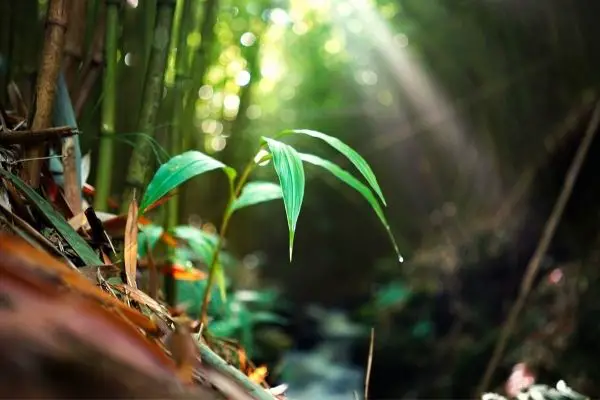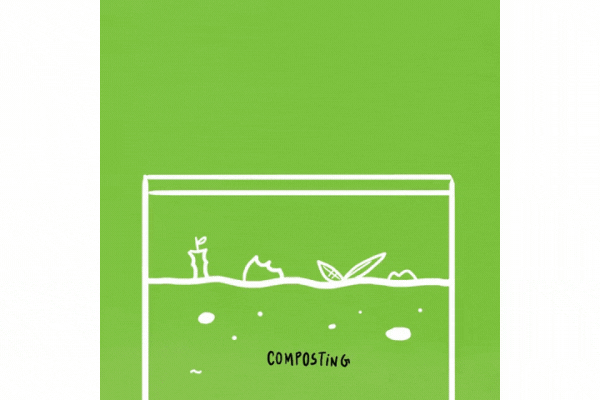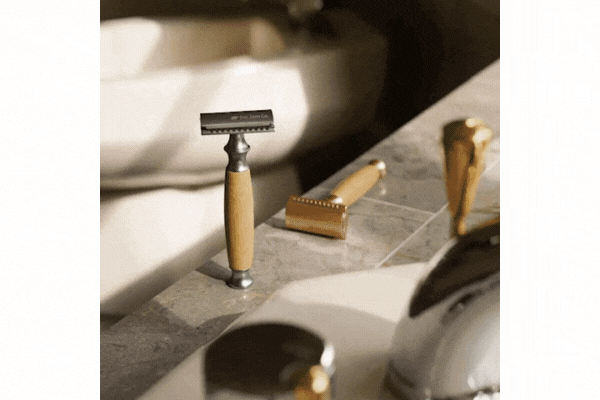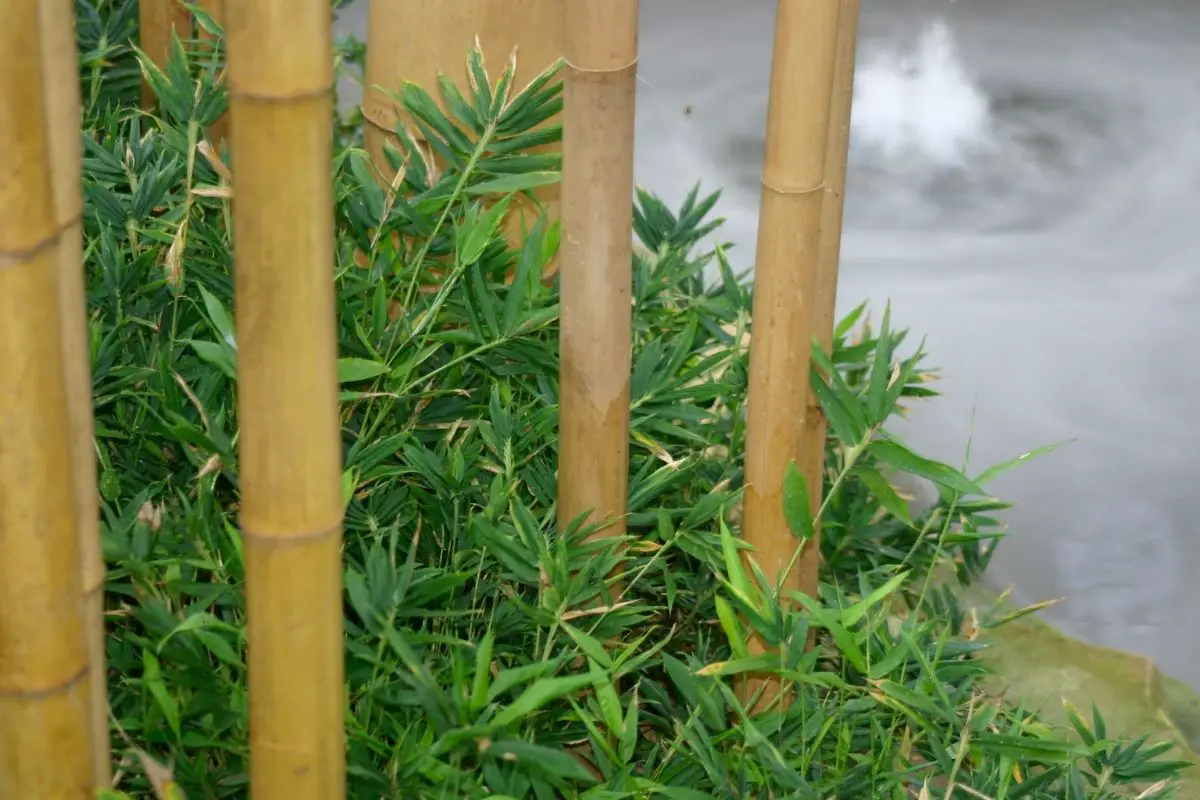Is Bamboo Eco-Friendly (More Sustainable Than Wood?)
Bamboo has taken over the green marketplace in recent years! I am guilty of that too with more and more bamboo items replacing things like plastic and cotton!
From toothbrushes to eating utensils to clothing, you can’t turn a corner without bumping into a new and innovative use for this eco-friendly material.
But is bamboo really sustainable? Or is the use of bamboo as a sustainable material just a result of clever marketing?
Yes, bamboo is one of the most sustainable crops on Earth! But it’s far from perfect.
Here’s how bamboo outshines other natural resources like wood and cotton (and how we can try to do even better in the future!)

What Is Bamboo?
Bamboo is a group of grasses that can grow up 100 feet tall. There are over 1,600 identified species of bamboo.
Researchers believe that bamboo originated in Asia — most likely in what is now China — and is still associated with the area today. But bamboo can be grown in most temperate climates around the world.
Bamboo fiber can be harvested and turned into materials like wood, paper, or fabric. (However, bamboo itself is not a tree and does not produce wood in the botanical sense.)
Why Is Bamboo Considered Eco-Friendly?
If you’ve heard that bamboo is better for the environment than trees, you’re not alone. And there is some truth in these claims.
Bamboo grows incredibly quickly. This means that a single bamboo plant can produce more “wood” than most tree species in the same amount of time.
As a result, bamboo consumes fewer resources (e.g., water, fertilizer, acreage) than similar crops.
One of bamboo’s greatest advantages over other crops is its ability to thrive in subpar soil. Bamboo roots stay very close to the soil’s surface, allowing the plant to grow in areas where tree roots could not penetrate.
Bamboo also regenerates from its roots, lessening the resources needed to grow a new generation of bamboo after each harvest.
Meanwhile, bamboo indirectly protects the environment by anchoring soil with its roots and slowing erosion.
Does Growing Bamboo Harm The Environment?

Despite all of the benefits, there are some environmental issues associated with bamboo farming:
Bamboo can contribute to deforestation just like any other agricultural crop. This becomes a bigger concern the more commercial demand grows for bamboo as a sustainable material.
Since bamboo is almost exclusively grown in Asia, there are major transportation costs (financial and environmental) associated with its use.
In many parts of the world, “locally grown” bamboo products are practically a myth. Even if the final products are manufactured in your country, the raw bamboo must first be shipped across the ocean.
Is Bamboo More Sustainable Than Wood?
It can be!
Few tree species — if any — can compete with bamboo’s growth rate. This fact alone makes bamboo more sustainable than most hardwood varieties.
However, there are scenarios where wood is more sustainable than bamboo. Ethically farmed wood grown locally may have a smaller total impact on the environment than bamboo grown overseas and shipped around the world.

Is Bamboo More Sustainable Than Cotton?
Cotton is an incredibly versatile textile. Unfortunately, it also consumes a great amount of water and other resources.
In contrast, bamboo grows faster and requires fewer resources to produce the same amount of fabric. However, the creation of bamboo fabric is a bit controversial.
While it’s possible to make fabric from 100% bamboo, the bamboo must be processed first. This transforms the bamboo cellulose into fibers that can be woven into fabric.
There are two ways to turn bamboo cellulose into fabric: Chemically or mechanically.
Chemically processing bamboo utilizes harsh compounds that are potentially harmful to the environment. The end result is also known as rayon or viscose.
Mechanically processing bamboo eliminates the need for harsh chemicals. Instead, the bamboo cellulose is physically broken down and formed into strands. The end result is more akin to natural linen.
4 Products That Can Be Made From Bamboo

1. Fabric
Bamboo fabric is considered a natural textile. It can be broken down (such as via compost) just like cotton and other natural fibers.
Fabric made from bamboo can be used for a wide variety of applications.
Garments made from bamboo are incredibly soft and breathable (the material is very popular for undergarments and activewear). These same qualities make bamboo fabric a wonderful choice for bedding.
You’ll even find personal goods — reusable menstrual pads, diapers, etc. — made from bamboo fabric.
2. Wooden Goods
You’re probably most familiar with bamboo as an eco-friendly alternative to hardwood!
Bamboo can be used to create gorgeous hardwood flooring, durable furniture, and many other consumer products traditionally made of wood.
Bamboo also shines as an alternative to plastic. Bamboo-handled toothbrushes are incredibly popular but are just one example of how this natural material can replace non-biodegradable ones.

3. Paper
Just like wood pulp can be transformed into paper, bamboo pulp can be turned into this everyday product as well.
Bamboo paper can be used to make stationery and office goods that would normally rely on tree-sourced pulp.
Bamboo can also be used to make single-use household products like paper towels and bath tissue. In fact, bamboo is the most popular alternative to tree-based paper products in the home!
4. Fuel
Bamboo has great potential as a source of sustainable bioenergy. It can be burned just like wood or turned into charcoal.
Countless people around the world rely on burning wood to cook or heat their homes. And that’s not even touching the industrial sector!
Bamboo makes excellent biofuel for all of the same reasons it can be to make more sustainable “wood” flooring and furniture. It grows incredibly quickly and produces an incomparable amount of biomass per acre.
With that said, you should think twice before swapping out your household firewood for bamboo!
Bamboo contains air pockets that can expand and “pop” when heated. Properly splitting the bamboo before burning can prevent these explosions.
Can Bamboo Be Disposed Of Sustainably?
Yes!
Composting is the best way to dispose of bamboo at home! Anything made from 100% bamboo can be placed in your backyard compost bin, worm farm, or Bokashi bucket.
The ability to safely and efficiently compost bamboo is what makes it such a great alternative to plastic. So before you toss that old bamboo toothbrush handle or used chopsticks, consider adding them to your compost pile instead!

Are There Any Sustainable Alternatives To Bamboo?
Bamboo is not the only sustainable material being used to create wood, plastic, and fabric alternatives.
Here are some other materials that can be used to lessen your impact on the environment:
Hemp
Hemp is a wonderful alternative to cotton that doesn’t require the same heavy processing as bamboo to turn into fabric.
It requires far less land and water to produce than cotton. Plus, the finished product is stronger and longer-lasting than cotton fabric!
Cork
Cork makes great residential flooring that is both durable and extremely well-insulated. High-end cork flooring mimics the look of authentic hardwood.
Since cork is made from bark, not actual wood, the tree does not need to be cut down during harvest. Trees continue to produce new cork throughout their lifetimes.
Flax
Flax is most commonly used to create a natural fabric called linen. Both growing and processing flax into usable fibers require less water than cotton.
Innovations in composite technology have also made it possible to make a wood-like material, called Ekoa, from flax and resin.
Bio-Plastic
Bamboo is one of the best alternatives to plastic currently available. In the future, however, something called bio-plastic could beat bamboo in sustainability.
Bio-plastic is plastic derived from plants. And, believe it or not, it already exists.
Unfortunately, today’s bio-plastics are manufactured with harsh chemicals and are not 100% biodegradable. But these problems could be solved before we know it!
More fun facts about bamboo below!
Frequently Asked Questions
Are bamboo products made of the same bamboo that pandas eat?
There is a common misconception that the bamboo used to create wooden floors or rayon fibers is the same bamboo consumed by the giant panda.
There are over 1,400 known species of bamboo. Pandas only eat a handful of these species.
Meanwhile, bamboo farms tend to grow larger species that pandas do not consume.
So, no, you don’t need to worry about whether your new bamboo toothbrush could have been a panda’s meal. But there is still a chance that the land used to grow this bamboo was once a natural panda habitat.
Can you grow bamboo at home?
Bamboo is a popular ornamental plant in many areas. It works especially well as a tropical hedge in place of a privacy fence.
With that said, bamboo can be incredibly invasive. The most invasive bamboo species use creeping roots, called rhizomes, to spread throughout the surrounding area. And since bamboo easily regenerates from its root tissue, getting rid of this plant once it’s established is no easy task!
Before planting bamboo in your own landscape, research whether or not it is recommended to do so. Also, regardless of bamboo’s invasiveness in your area, be sure to select a clumping species of bamboo that does not spread aggressively via the roots.






